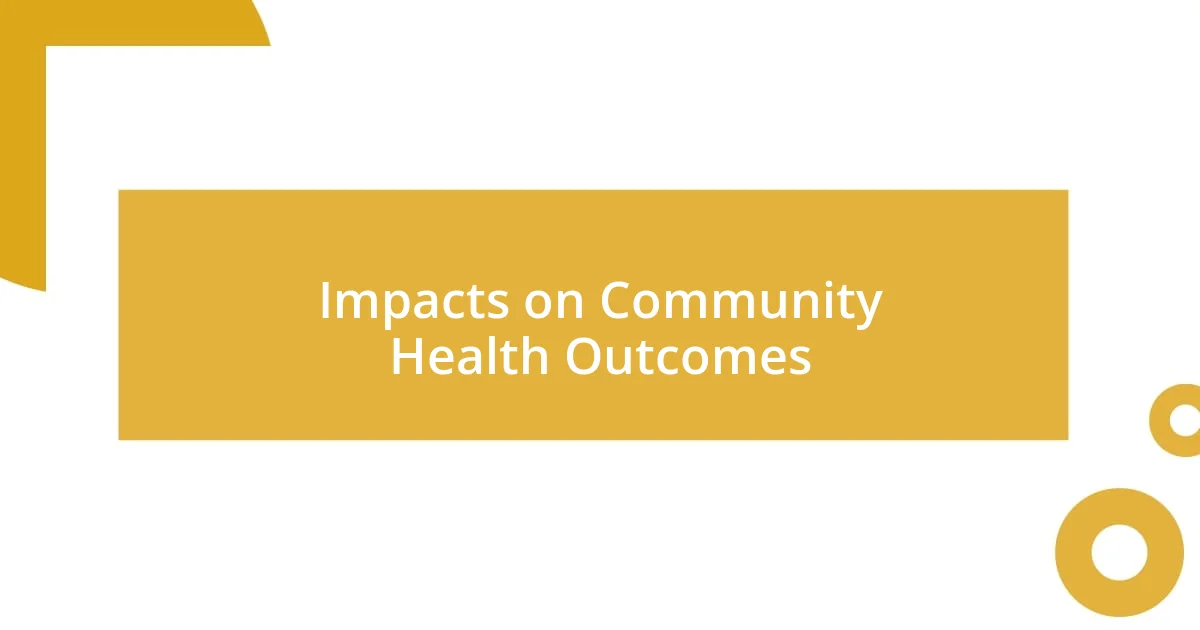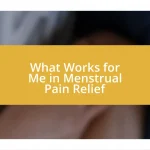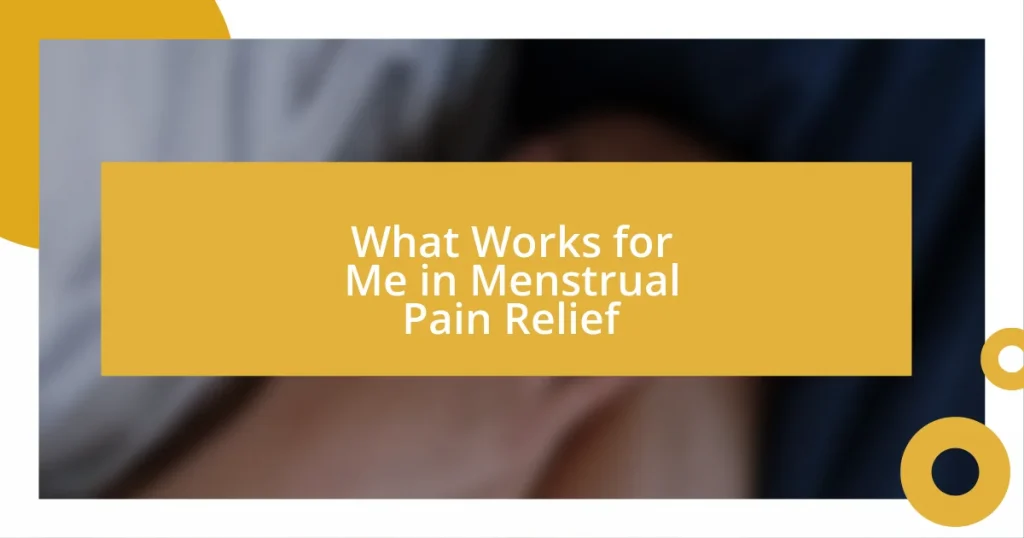Key takeaways:
- Public health regulations are essential for preventing health crises, ensuring safe food, and building community trust in health authorities.
- Community engagement and education significantly enhance compliance with health regulations, fostering informed decision-making among citizens.
- Effective communication and empathy are crucial in addressing public concerns and misconceptions, improving acceptance of health regulations.

Importance of Public Health Regulations
Public health regulations play a crucial role in safeguarding community health. I remember a time when a local outbreak of foodborne illness sent shockwaves through my neighborhood. It was a stark reminder of how vital these regulations are; they not only prevent such outbreaks but also help us trust that the food we consume and the environments we inhabit are safe.
Thinking back on that experience, I realized how regulations serve as a safety net, protecting the vulnerable among us. Have you ever considered how these rules create a level playing field for everyone? It’s comforting to think that, thanks to public health regulations, we can minimize disparities in health and ensure that everyone has access to essential services and clean environments.
Additionally, regulations often facilitate quick responses to public health crises. For instance, when the pandemic hit, I saw firsthand how health departments mobilized swiftly due to pre-existing regulations. It’s incredible to think how these frameworks not only save lives but also strengthen the trust between communities and health authorities. Wouldn’t you agree that this trust is essential for effective public health?

Key Public Health Regulations Overview
Public health regulations encompass a variety of laws and guidelines designed to protect and improve the health of communities. From food safety standards to vaccination mandates, each regulation aims to address specific health concerns that could otherwise compromise public well-being. I often reflect on how these regulations are not just abstract rules; they have direct implications in our daily lives. For instance, I once visited a restaurant that had an A-grade health inspection sticker prominently displayed. It gave me a sense of reassurance about the quality of food I was about to enjoy.
Furthermore, regulations also dictate responses to health emergencies, ensuring that the government and health agencies can act promptly. I recall a situation during flu season when vaccine distribution was streamlined due to existing health regulations. This not only made it easier for individuals to get vaccinated but also helped reduce the overall strain on healthcare systems. Have you ever noticed how such structure in public health can make a tangible difference in our experience? It’s these behind-the-scenes efforts that help keep us all healthier.
In addition to their direct health benefits, public health regulations promote transparency and accountability. I’ve watched how communities engage with health data, embracing the role of informed citizens. It feels empowering to know that when local health inspections are made public, we can make better choices about where we eat or seek care. Do you ever think about how these regulations shape our daily decisions and interactions with healthcare providers? The link between regulations and personal well-being is often more significant than we realize.
| Type of Regulation | Purpose |
|---|---|
| Food Safety | Ensures safe food handling and preparation practices to prevent foodborne illnesses. |
| Vaccination Mandates | Increases herd immunity by requiring vaccinations for certain populations. |
| Tobacco Control | Reduces smoking rates and protects non-smokers from secondhand smoke exposure. |
| Air Quality Standards | Monitors and regulates pollutants to protect overall public health. |

Impacts on Community Health Outcomes
When I reflect on the impacts of public health regulations on community health outcomes, I can’t help but think back to the summer I volunteered at a local health fair. It struck me how regulations around screenings and immunizations directly led to a noticeable increase in participation. I engaged with families who were enthusiastic about vaccinations, realizing how regulatory frameworks empower them to make informed choices. Seeing the smiles of parents, knowing they were taking a proactive step for their children’s health, filled me with hope.
- Effective regulations help reduce the incidence of preventable diseases, creating a healthier community overall.
- They ensure that services like clean water and waste management are not just available but also reliable.
- Strong public health measures can lead to decreased healthcare costs, meaning families can allocate their resources elsewhere, enhancing their quality of life.
My neighbor often shares his story of how a new health ordinance improved air quality in our area. He talks about the days when he struggled with asthma attacks, worried each time he ventured outside. With stricter emission regulations, he’s now able to enjoy evening walks with his family. This transformation isn’t merely statistical; it’s personal and emotional. It drives home how a well-implemented regulation can enhance day-to-day living.
- Improved air quality regulations have been linked to reduced respiratory illnesses in neighborhoods.
- Community initiatives around healthy eating, spurred by public health guidelines, improve nutritional outcomes for individuals.
- Regulations that focus on mental health services can foster a more supportive environment, ultimately improving overall community wellness.

Challenges in Implementing Regulations
Implementing public health regulations often encounters significant hurdles. One challenge is the varying levels of resource availability across different communities. I remember a local initiative that aimed to enforce food safety standards. In a community with limited funding, it was disheartening to see how these regulations struggled to take root. Have you ever experienced a situation where good intentions collided with insufficient resources? It left me reflecting on the disparity in how regulations can be enforced effectively in one area while faltering in another.
Another critical obstacle is the resistance from certain sectors or populations who may feel threatened by regulations. For instance, I once attended a town hall meeting where local farmers expressed concern over new agricultural regulations aimed at reducing pesticide use. Their fears about financial impacts on their livelihoods were palpable. How do you strike a balance between protecting public health and addressing the economic realities of those who are directly affected? This question can be incredibly complex and underscores the challenge of bringing diverse stakeholders together.
Moreover, communication plays a vital role in the success of public health regulations. I’ve seen projects derail simply due to a lack of clear information. There was a case in my neighborhood where a new vaccination requirement sparked confusion and misinformation. It made me realize how critical it is to engage communities in understanding why these regulations exist. Have you ever found yourself unsure about a health guideline? That shared feeling of uncertainty highlights the need for continuous dialogue between health authorities and the public to build trust and ensure compliance.

Strategies for Effective Compliance
One effective strategy for compliance is enhancing community education and outreach programs. During a wellness workshop I attended last year, I witnessed firsthand how knowledgeable facilitators transformed perceptions around health regulations. They didn’t just present rules; they connected the dots, illustrating how these regulations protect our families. Have you ever left a session feeling empowered to make changes? That sense of empowerment can significantly boost compliance rates when individuals understand the benefits behind regulations.
Another important approach is to engage local leaders in the implementation process. In my experience, when community influencers advocate for health initiatives, people are more inclined to follow suit. I remember a local council member who championed a smoking ban; their personal story about losing a family member to lung cancer resonated deeply with the community. How often do we respond better when we see our leaders share their own vulnerabilities? This connection helps in creating a ripple effect of compliance through relatable experiences.
Lastly, simplifying the compliance process can make a world of difference. I recall a recent initiative to promote food safety in our local market, where cumbersome paperwork almost stopped vendors from participating. By streamlining these requirements into a user-friendly checklist, compliance skyrocketed. Have you ever felt overwhelmed by complex regulations? When officials break down complicated processes into manageable steps, it becomes easier for everyone to join in on the effort for better public health.

Personal Reflections on Experience
Reflecting on my experiences with public health regulations, I recall a particularly eye-opening moment during a health fair a few years ago. There, I interacted with various members of the community who had differing views on the importance of these regulations. Hearing their fears and misconceptions, I realized how crucial it is to bridge the gap between expert knowledge and community understanding. Have you ever felt frustrated when your intentions to help others were met with skepticism? It highlighted for me the fundamental need for empathy in these discussions.
One situation that stands out is when I volunteered at a local clinic implementing new screening guidelines. Although the intentions were noble, I noticed discomfort among both staff and patients. It dawned on me that even well-crafted regulations could create anxiety if they’re not introduced thoughtfully. How can we alleviate such apprehension? Listening to their concerns and providing clear, compassionate communication made a significant difference, fostering a supportive atmosphere that ultimately encouraged compliance.
I often reflect on when I participated in a workshop aimed at educating new parents about immunization schedules. The genuine anxiety about vaccinating their children was palpable. I could connect with their emotions; it reminded me of my own hesitance in the face of overwhelming information. This experience reinforced my belief that offering guidance and personal stories can alleviate fears surrounding public health regulations. Have you ever wished for someone to share their experiences to ease your worries? It’s these shared narratives that can unite us and create a more trusting relationship with public health initiatives.














